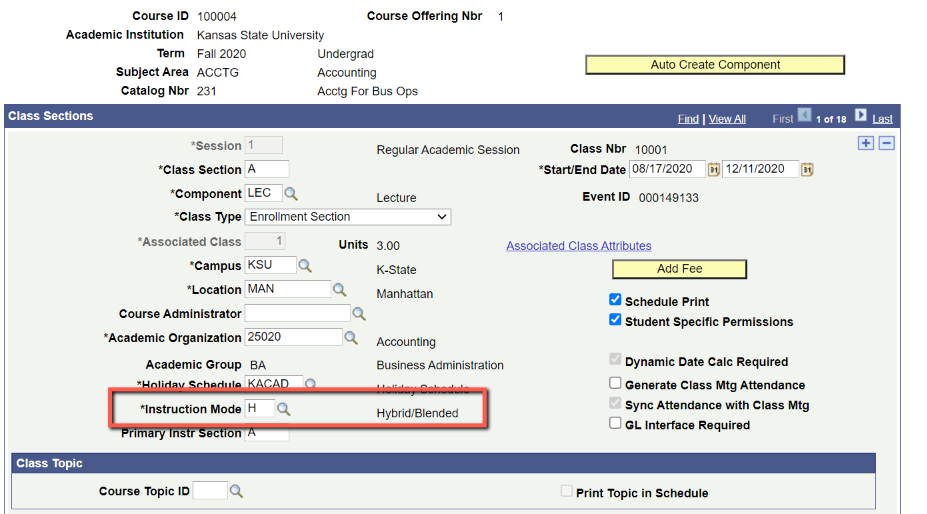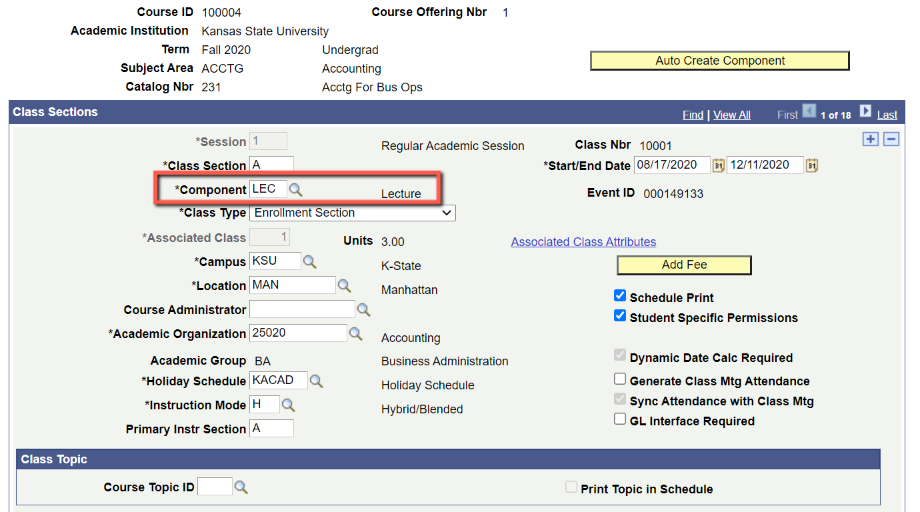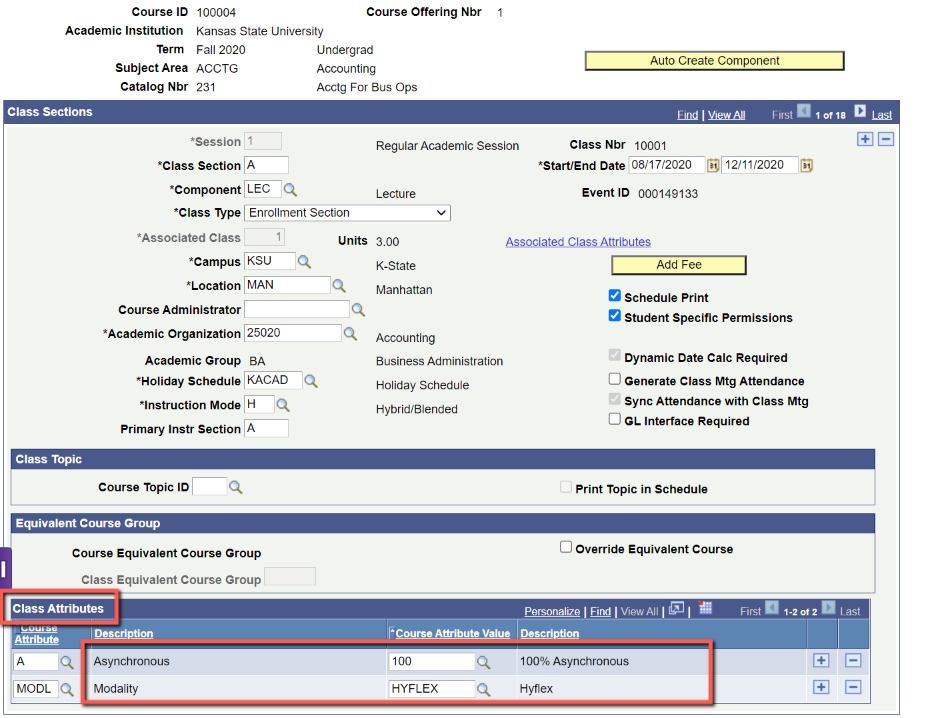- K-State home
- Curriculum
- FAQs
- Course FAQs
FAQs: Course(s)
When a department drops a course, the course number cannot be reissued for five years. { K-State ARN Manual – pg. 25 }
Occasionally, a group may wish to create a new set of course prefixes (CC, ECON, ENGL). Individuals should contact the Office of the Registrar and the chair of FSAAC to request a new course prefix. Voting for approval of the first course with the new prefix is also voting to approve the new course prefix. Each prefix is associated with an academic unit, and an academic unit may be responsible for multiple course prefixes. Additionally, no two prefixes can be identical.
{ K-State ARN Manual – pg. 25 }
Course components consists of items such as the prefix and number, title, short title, description, credit hours, pre- and co-requisites, semesters offered, grading basis, K-State 8 tags, and other information.
The instructional mode refers to the way a class is delivered. K-State has defined four (4) instructional modes which are
- In-Person/Face-to-Face Instruction
- Hybrid/Blended Instruction
- Distance/Online Instruction
- Guided Study Instruction
located on the Office of the Registrar website at https://www.k-state.edu/registrar/faculty-staff/acadclassschedule/course_scheduling/instructionalmode/

Course components types consists of items such as Activity, Lecture, Laboratory, Recitation, etc...
{CAPP - April 2019:https://www.k-state.edu/registrar/faculty-staff/acadclassschedule/course_scheduling/instructionalmode/types/}

Course modality refers to how a course is offered by the instructor. ... whether or not a course will require them to be physically present on campus at specific times. whether or not a course will require them to attend online meetings at specific times. For many years there was only one option available: On-campus instruction. As the field and practice of distance education and online learning has matured, the number of course modalities has increased as well.
K-State has defined several different modality options which are known as Class Attributes in KSIS. The modality definitions are located on the Office of the Registrar website at https://www.k-state.edu/registrar/faculty-staff/acadclassschedule/course_scheduling/instructionalmode/coursemodalities/

{ K-State ARN Manual – pg. 25 }
Course level is defined by KBOR as a common system of classification of academic information for all state universities, course levels are to be identified by the first digit catalog course number as follows:
|
000-099: |
|
No credit toward degree requirements |
|
100-299: |
|
Lower division undergraduate, designated as freshman-sophomore courses |
|
300-499: |
|
Upper division undergraduate, designated as junior-senior courses |
|
500-699: |
|
Upper division undergraduate, primarily for juniors and seniors, with enrollment of less than 50% of master’s students, also eligible for graduate credit |
|
700-799: |
|
Graduate and upper division, primarily for graduate level. For master’s students primarily; with enrollment of less than 50% undergraduate students. |
|
800-899: |
|
Graduate master’s and professional course beyond the undergraduate level |
|
900-999: |
|
Graduate level, primarily for doctoral students |
KBOR Policy Manual II-A-2 provides additional guidelines and percentage limits for undergraduate or
graduate students based upon the course number.
Results in a single section offering during registration under two or more academic departments. In order to offer a course in this manner at the point of registration the course must be approved and designated via the curriculum processes as a cross-listed course. { K-State ARN Manual – pg. 28 }
Cross-listing is an administrative way for two departments to share responsibility for a single course.
Example: ANTH 633/EDACE 750
ANTH 633 – Gender, Power & International Development cross-listed with EDACE 750 – Women, Education and Work
An academic unit may wish to teach two courses simultaneously. For instance, 675 and 875 are offered in the same classroom at the same time and with slightly different assignments. In such situations, the proposal should describe how the course will assure both an 800 level and a 600 level of instruction at the same time. In general, multilevel courses should not differ by more than 200 as maintaining satisfactory instruction at both levels becomes incredibly challenging. { K-State ARN Manual – pg. 42 }
By definition these courses do not have an academic home, and numerous academic units may offer these classes. There are two prefix options under this category: { K-State ARN Manual – pg. 30 }
- The GEN prefix is reserved for general undergraduate university courses.
- The creation, change or dropping of these courses begins in the Provost’s office and moves to FSAAC and then FS.
- The GRAD prefix is reserved for general graduate university courses.
- The creation, change or dropping of these courses begins with the graduate school. These proposals are moved from GCAAC, GC, FSAAC, and to FS.